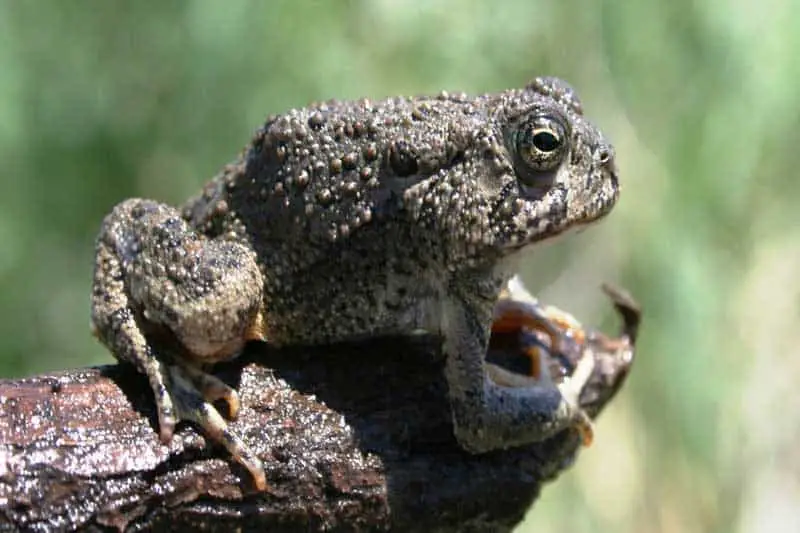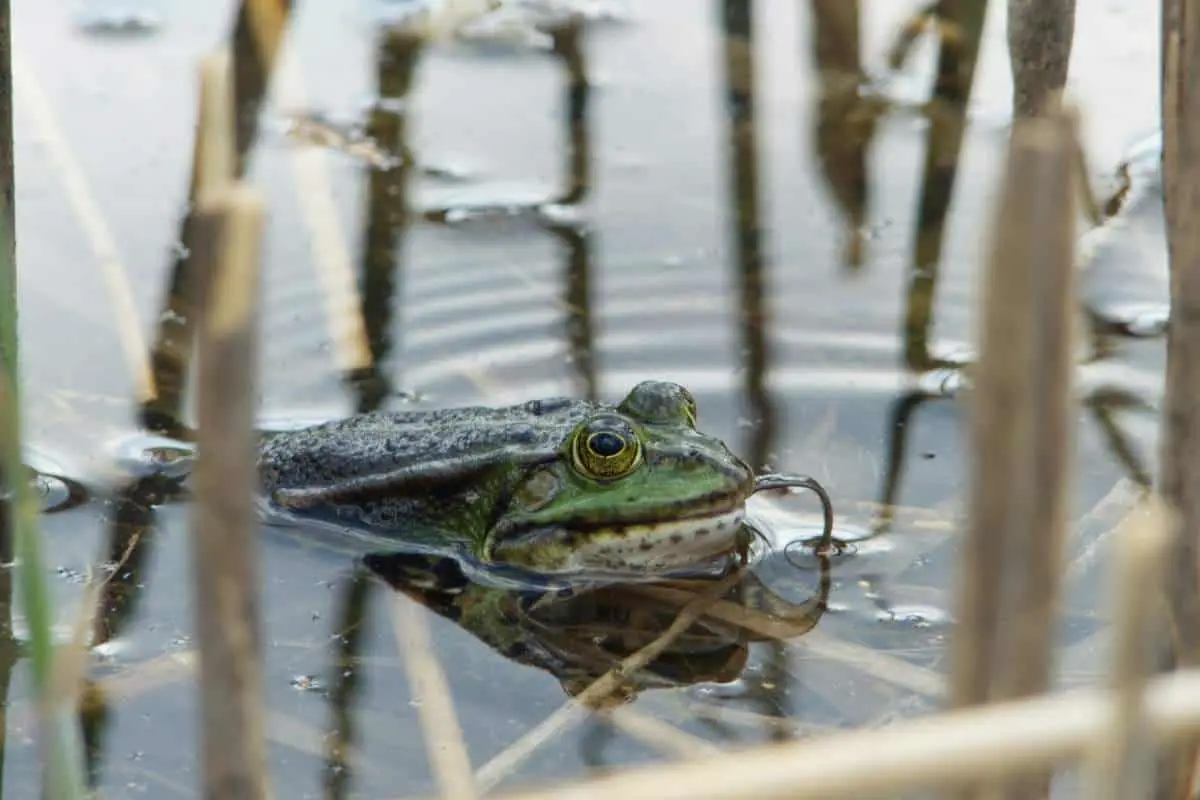You can find toads on every continent globally, except Antarctica. In North America, there are 16 species of toads in Arizona. Most of them are in the Family Bufonidaee, known as true toads. The others are in the Family Microhylidae, Rhinophrynidae, or Scaphiopodidae.
Generally, toads live in open landscapes, humid conditions, or suburban locations. Toads also breed near bodies of water and need to lay eggs near them. Arizona has 128 lakes and 5 major rivers which creates ample habitats for many species of toads.
Despite their common association with frogs, toads differ significantly in skin type, sounds, and warts. Notably, toads of Arizona can survive longer out of water, allowing them to venture further from water bodies. This article aims to provide information on the 12 types of toads in Arizona—divulging insights into the captivating world of the toads of Arizona.
Let’s hop in!
12 Toads in Arizona
The 12 different species of toads in Arizona are the western green toad, Arizona toad, Sonoran green toad, Sonoran desert toad, Woodhouse’s toad, Great-plains toad, Great Plains Narrow-mouthed Toad, red-spotted toad, Couch’s spadefoot toad, New Mexico spadefoot toad, great basin spadefoot toad, and the plains spadefoot toad.
1. Woodhouse’s Toad
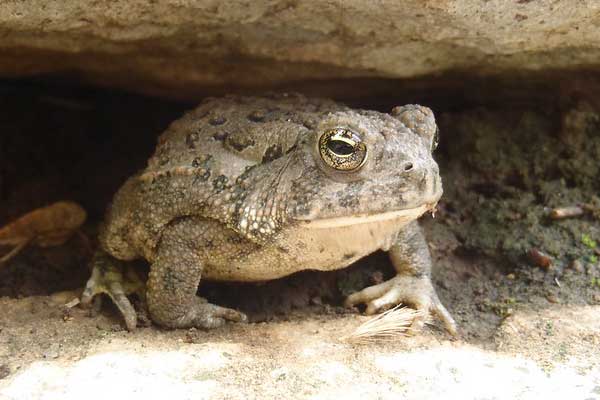
Scientific name: Anaxyrus woodhousii
The Woodhouse’s toad is grayish-brown or yellowish-brown with small dark spots. However, their bellies are paler and usually without spots. They can grow up to 5 inches in length and have long and large parotoid glands.
Woodhouse’s toads are common throughout the state of Arizona.
2. Great Plains Toad
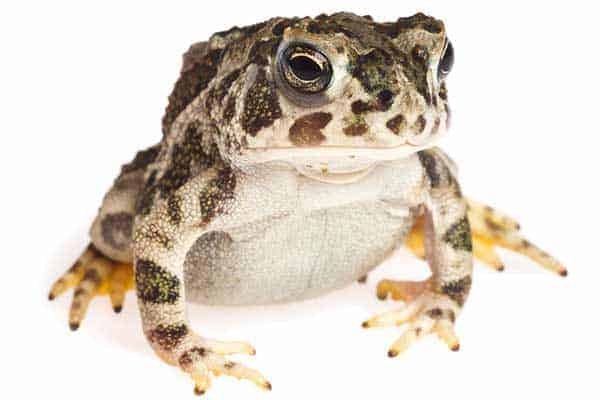
Scientific name: Anaxyrus cognatus
The Great Plains toad lives in the entire state of Arizona. They can easily burrow in loose soil and enjoy open grasslands or ditches. These toads are brown, grey, and green in color with darker botches. They have numerous warts and prominent ridges on their head. Females grow larger than males at up to 4 inches in length.
3. Red-Spotted Toad
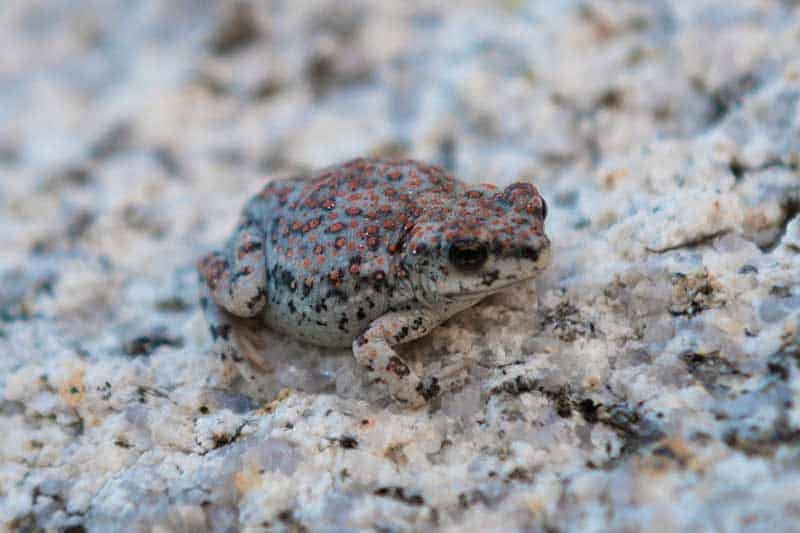
Scientific name: Anaxyrus punctatus
The Red-Spotted toad has a flat head and body that’s light gray, reddish-brown, or olive. It has distinctive red or orange warts throughout its body. You can find this toad in most of Arizona burrowing under rocks or living in rocky canyons and streams.
4. Great Plains Narrow-Mouthed Toad
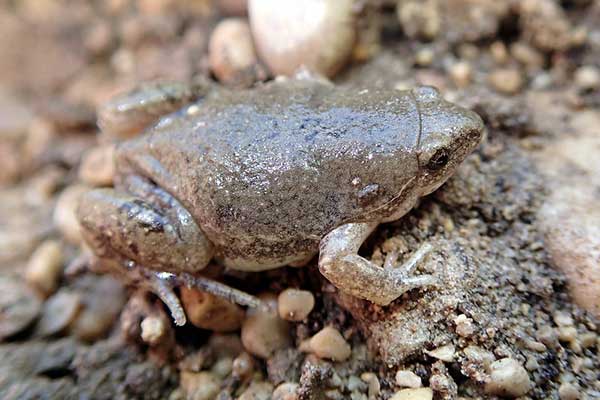
Scientific name: Gastrophryne olivacea
The Great Plains Narrow-Mouthed Toad, also known as the Western Narrow-Mouthed toad or the Mazatlan Narrow-mouthed Toad in Arizona. They are small toads of around 1.5 inches in length. Their coloring is generally gray-brown or olive green with lighter bellies. Sometimes their backs have black blotching. Their call is a high-pitched peeling similar to the buzz of a bee.
These are one of the smallest species of toads in AZ (Arizona), and unfortunately not a lot is known about their distribution and range in the state.
5. Couch’s Spadefoot Toad
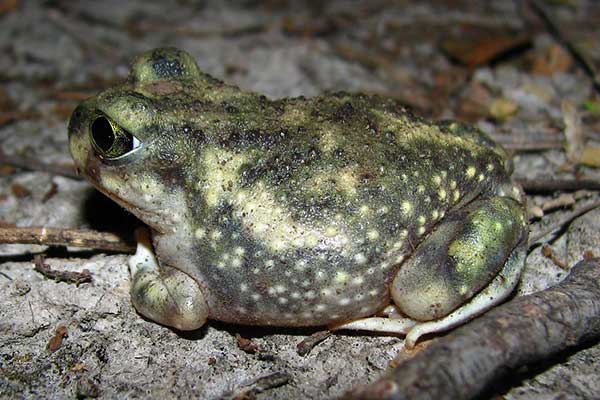
Scientific name: Scaphiopus couchii
The Couch Spadefoot toad has smooth skin that is yellowish, greenish, or olive colors with spots of brown or black. Spadefoot toads have vertical pupils and a sickle-shaped spade on their hind feet. They use the spades to burrow into the ground to hide from predators and prevent water loss. They live in Southern Arizona and breed “explosively” when rainfall creates temporary pools on dry land.
6. New Mexico Spadefoot Toad
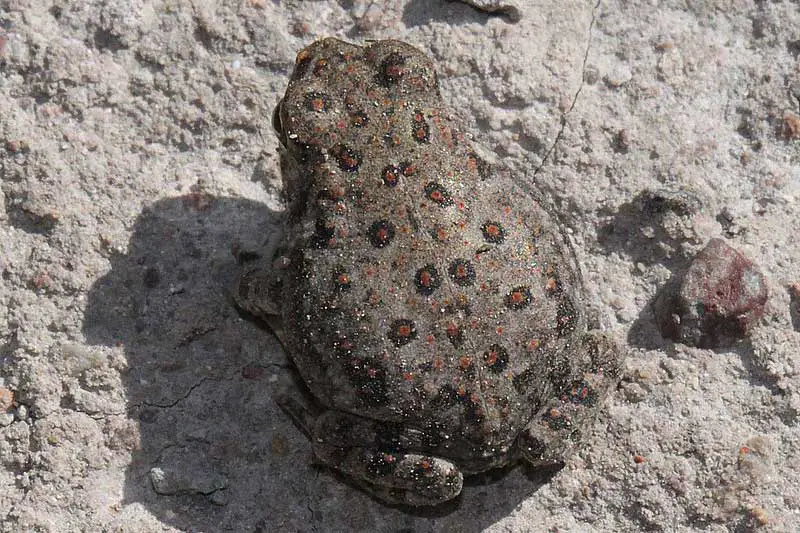
Scientific name: Spea multiplicata
The New Mexico Spadefoot toad has a round body that’s brownish, green, and grey. They also have black and orange speckling with withe bellies. Like the other Spadefoots on this list, their name comes from the spades on their hind legs that allow them to burrow. These toads can grow up to 2.5 inches in length.
They occur in several southwestern states like Colorado, Texas, Oklahoma, Utah, and Arizona.
7. Sonoran Desert Toad
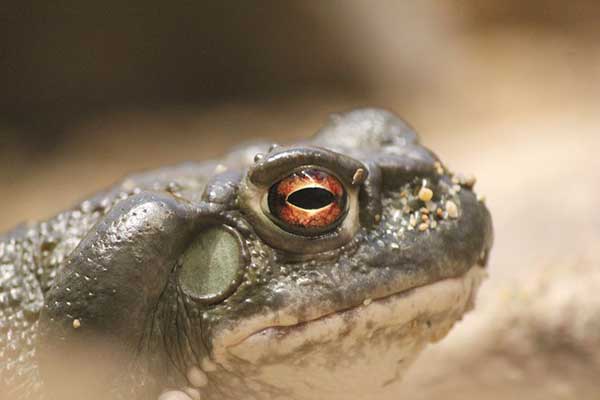
Scientific name: Incilius alvarius
This huge toad reaches over 7 inches in length and prefers semi-desert habitats common in much of the southern third of the state of Arizona. They have smooth, olive green skin. This, combined with their size, makes them quite similar in appearance to bullfrogs.
They usually only breed on one night per year, following a heavy rainfall. This extremely limited breeding season makes them vulnerable, because they simply don’t breed as much as other toads.
8. Great Basin Spadefoot Toad
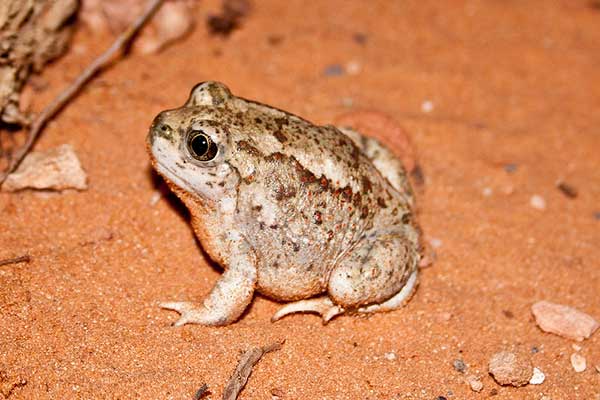
Scientific name: Spea intermontana
Named for the wedge-shaped digging claw on their foot, spadefoot toads spent most of their lives buried underground since they don’t live in wet, humid environments like most toads. The Great Basin spadefoot lives only in the northwestern corner of Arizona, towards the Utah with Nevada.
As with other spadefoots, they breed after heavy rains when the gathered rainwater creates a suitable environment for their eggs and tadpoles.
9. Sonoran green toad
Scientific name: Bufonidae Anaxyrus retiformis
The Sonoran green toad is only found in the Southwest Sonora Desert region of Arizona. This species is thought to be in an inactive state for around 10 months out of the year so not much is known about it.
This small frog is also known as the reticulated toad, and they breed in July and August each year. In appearance they are green or greenish-yellow in color, but have a net shaped pattern on their backs that is brown or black.
10. Western green toad
Scientific name: Anaxyrus debilis insidior
The western green toad is a subspecies of the North American green toad. The western variety can be found as far west as southeastern Arizona. Both the eastern and western green toad is common to the western United States in states like Colorado, Texas, and New Mexico.
Green toads are on the small side and are bright or sometimes pale green with black spots. They are most active between the months of March and August while they are breeding.
11. Arizona toad
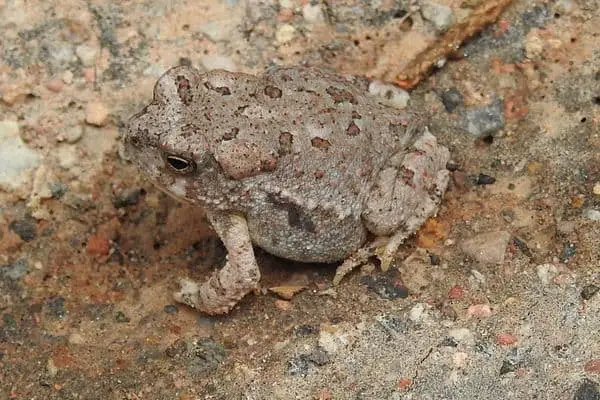
Scientific name: Anaxyrus microscaphus
The Arizona toad is another species that is only found in the Southwest United States. They are also endangered in several states including Arizona, Utah, and Nevada. Breeding begins as early as February in Arizona for this species, though it may start later at higher elevations.
Their colors can range from gray or brown to tan or beige, usually with reddish-brown warts. Arizona toads can be found in Zion National Park.
12. Plains spadefoot toad
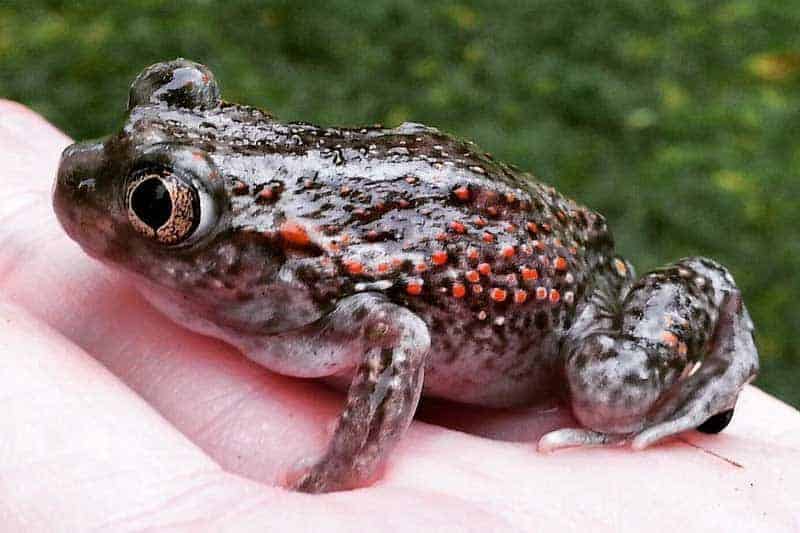
Scientific name: Spea bombifrons
This species has a wide range that spans from Canada through the great plains of the United States and then into Mexico. The plains spadefoot toad occurs in Northeastern and a portion of Southeastern Arizona.
They grow up to about 2.5 inches in length and are typically gray-brown or tan in color. They are among the easiest toads to ID because of their red sports and the fact that they actually look more like frogs than toads.
